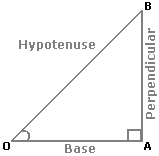Permutations and Combinations:
Factorial Notation:
Let n be a positive integer.
Then, factorial n, denoted n! is defined as:
n! = n(n - 1)(n - 2) ... 3.2.1.
Permutations:
Each of the arrangement which can be made by taking some are all of a number of things is called a permutationpermutation means "arrangement" i.e, the order of the "objects" is important.
The permutation of three things a,b and c taken two at a time are ab, ba, ac, ca, cb, bc .Since the order in which the object are taken is important
ab and ba are counted as a two different permutation.
The word "Permutation" and "arrangement" are synonymous and can be used interchangeably
.The different arrangements of a given number of things by taking some or all at a time, are called permutations.
Examples:
All permutations (or arrangements) made with the letters a, b, c by taking two at a time are (ab, ba, ac, ca, bc, cb).All permutations made with the letters a, b, c taking all at a time are:
( abc, acb, bac, bca, cab, cba)
Number of Permutations:
The number of permutations of n things taken r at a time is denoted by:
Combinations:
Each of the different groups or selections which can be made by taking some or all of a number of objects is called a combination.
In combination,the order in which the object are taken is not considered
The combination of three objects-a,b,and c taken two at a times are ab, bc, ca. here ab, ba are not considered separately because the order in which a and b are taken is not important

.jpg)


.jpg)





.jpg)






